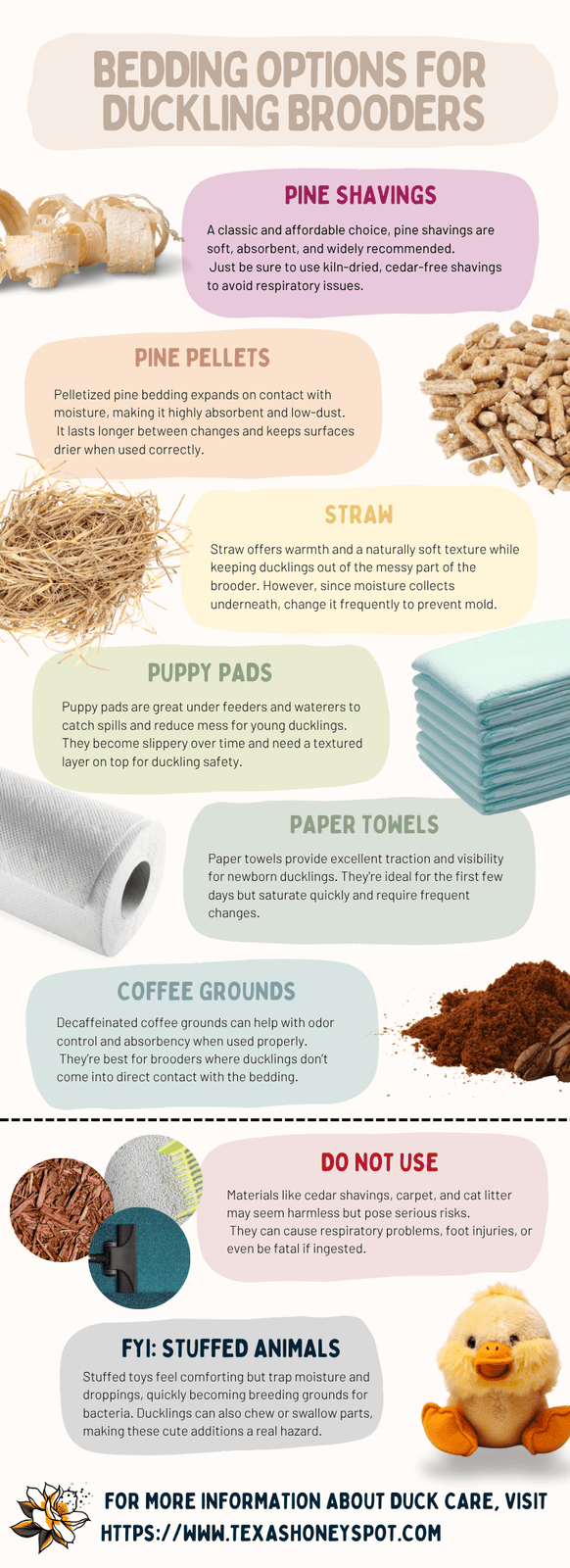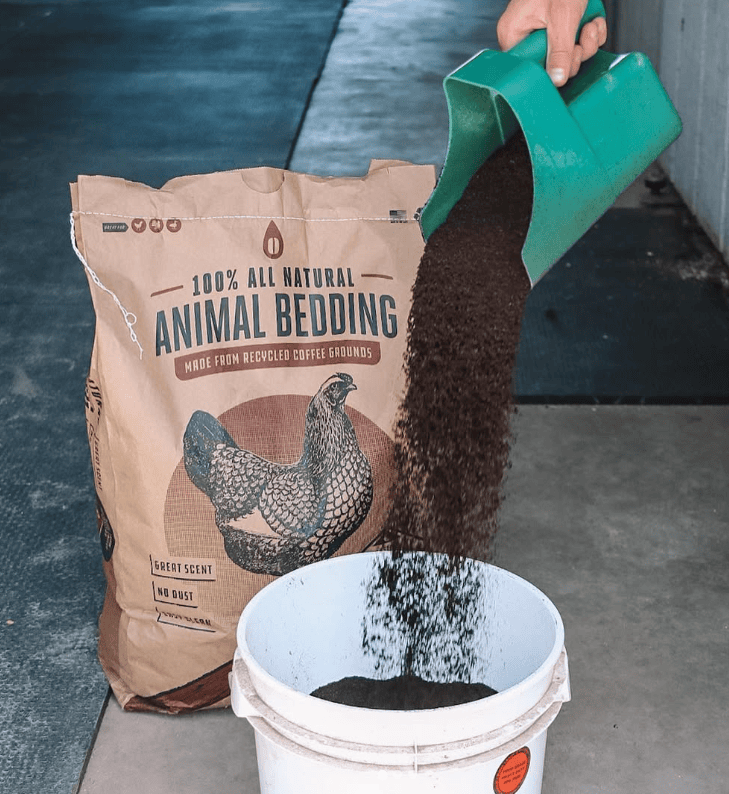Raising ducklings is a joyful and rewarding experience, but it comes with many challenges especially when it comes to keeping them clean while keeping the smell down. One of the most critical decisions that you can make when starting out is selecting the best bedding for keeping your messy ducklings clean, safe and happy in their brooder. Various materials are available, each with its benefits and drawbacks.
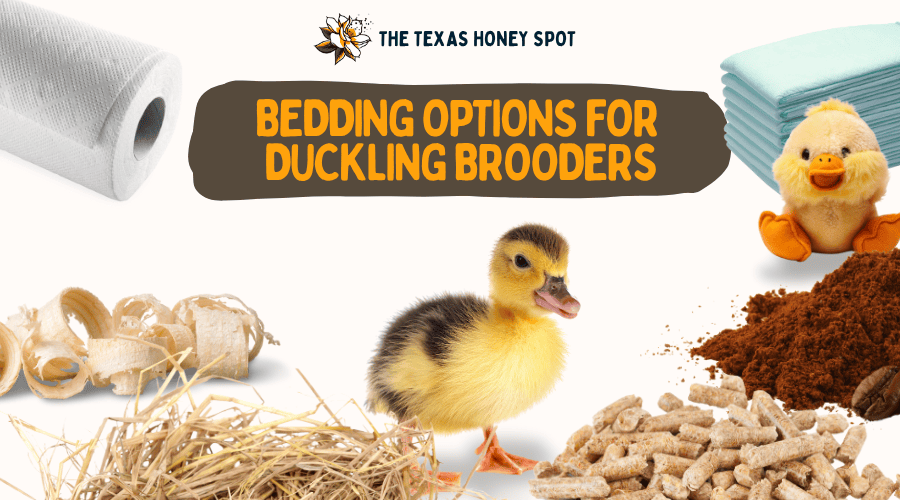
Avoiding the wrong options can significantly improve the health and happiness of your feathered babies, while switching to a premium option can bring relief from some of the inconsistencies that the mid-grade options have. This guide will walk you through the top choices, key factors to consider, and common mistakes to avoid.
Why Bedding Matters in a Duckling Brooder
Ducklings spend a lot of time in their brooders, especially in their first few weeks of life. The right bedding does more than just cushion their feet—it plays a critical role in their health and development.
Proper bedding provides the following benefits that are essential to having a positive experience with rearing ducklings:
- Maintaining warmth and insulation in the brooder
- Controlling moisture, preventing mold and bacterial growth
- Reducing the risk of foot and leg injuries and infections
- Supporting natural nesting and sleeping behaviors
- Helping manage odor and cleanliness
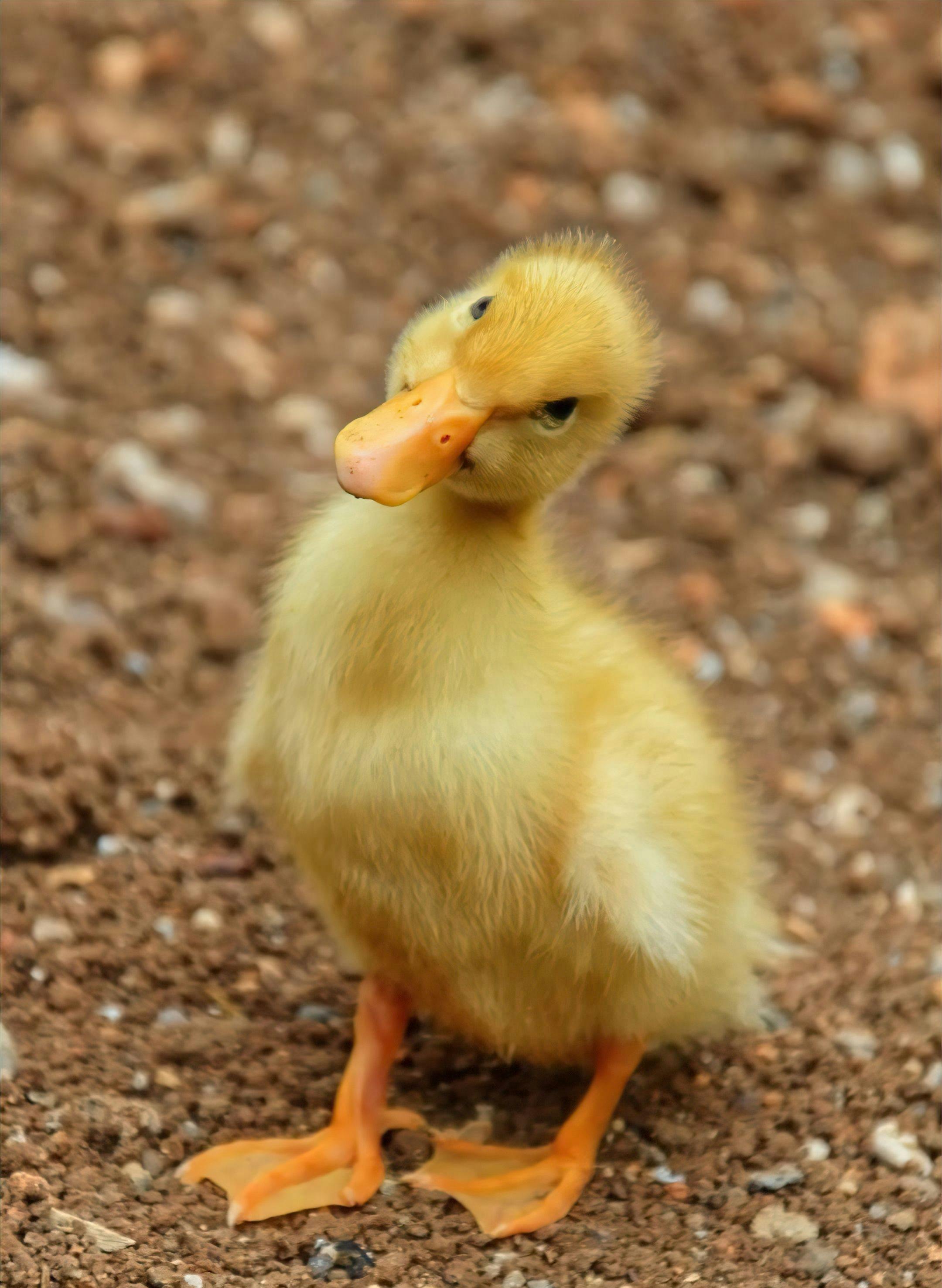
Overall, you're probably here because you want to keep your ducklings soft, fluffy, and relatively odor-free, not cold, wet, and stinky. Selecting the right bedding for your brooder ensures that your ducklings are not only soft and fluffy, but that they grow up in a hygienic, healthy environment.
Key Factors To Consider When Choosing Bedding
When shopping or prepping for bedding, here are the top features to look for. They’ll help ensure your ducklings stay safe and comfortable:
- Absorbency: Ducklings are messy and love splashing in water. Absorbency can quickly become an issue in either direction. Choose a bedding that isn't absorbent, and your ducklings will constantly be swimming in their own poop. Don't be fooled by super absorbent bedding, however. It will still need to be changed out regularly.
- Non-toxicity: Avoid materials that have harmful chemicals or that may be harmful if ingested accidentally.
- Ease of Cleaning: Find bedding that is easy to be switched out, likely on a daily basis as the ducklings get older. If it's a struggle to clean out your brooder because of your bedding choice, then it's time to switch.
- Cost & Availability: Many of the best bedding options are cost-effective, even for a large quantity of ducklings. Plan your costs before purchasing or hatching your ducklings if possible. There are some premium options that are expensive, consider these as backup options or last resorts.
Consider these factors your checklist when evaluating any bedding option.
A Review Of Popular Bedding Options
With the key criteria in mind, let’s explore the most common bedding materials, and a few creative alternatives. Each has unique pros and cons.
Pine Shavings
Pine shavings are what most poultry keepers use. They’re affordable, absorbent, and are the most widely available choice. You'll usually find towers of pine shaving bags stacked outside of most farm stores. The
Excellent moisture control.
Soft texture supports comfort.
Low dust content (compared to sawdust)

Pelletized Pine Bedding
Pelletized pine bedding is a compressed wood product that expands when wet, making it an absorbent and low-dust option for duckling brooders. It's often marketed for horse stalls but works well for poultry as long as it's plain pine with no additives.
- Highly absorbent and expands on contact with moisture.
- Low dust compared to traditional shavings.
- Longer lasting between changes.
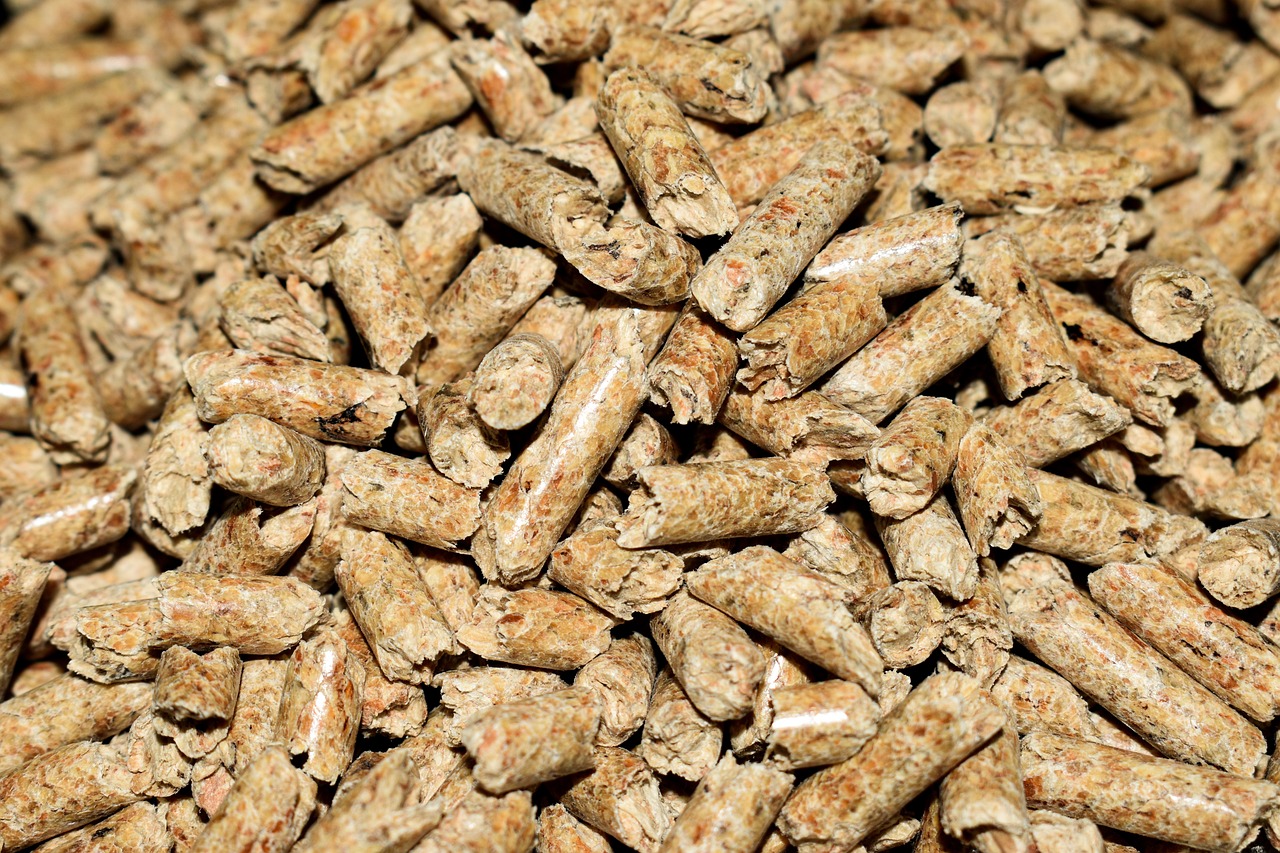
What to watch out for: Ensure that the pelletized pine bedding you select is specifically labeled as safe for animal use. Some pellets, especially those intended for wood stoves, may contain chemical additives or have been treated with substances that are harmful to ducklings. These additives can release fumes or residues that are toxic when inhaled or ingested.
Additionally, while pelletized bedding is highly absorbent, it can become overly compacted if it becomes too wet, leading to a dense layer that may be uncomfortable for ducklings to walk on. Wet a few pellets before using so you understand how much space they'll occupy once expanded. Regular monitoring and replacement as pellets get too saturated are essential.
Puppy Pads
Puppy pads are a convenient, absorbent solution especially suited for short-term brooding for younger ducklings, or for use underneath other bedding types. They catch spills and keep moisture away from ducklings' feet.
- Great absorption.
- Easy to change daily.
- Reduces bedding mess, especially under feeders and waterers.
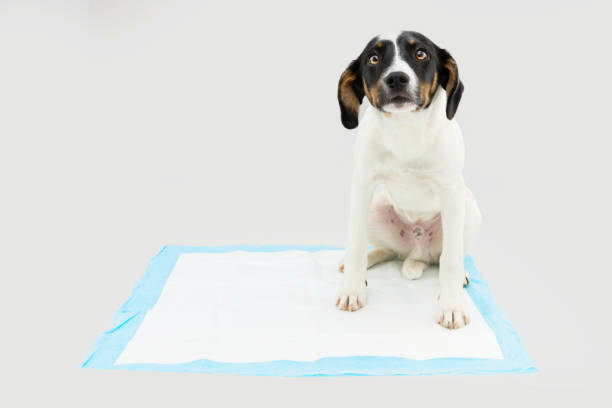
What to watch out for: Pads can become slippery (and, like all bedding options, a health hazard) as ducklings grow or when not changed frequently. This can lead to leg injuries or spraddle leg. Ducklings are naturally active and curious, and a slick surface can impede their movement and development. Additionally, some puppy pads have chemical attractants meant for dogs which can be unsafe for ducklings. Always use unscented, chemical-free options.
Straw
Straw is a traditional option that’s warm and comfy, but has drawbacks when used in humid or unclean conditions. It provides nesting comfort but lacks absorbency. Many duck owners use it in their brooder to keep the ducklings above the mess, as a thick layer of straw bedding allows the liquid mess from duckling poop and water spillage to flow below the straw, but keeps the ducklings and solid waste on top of the straw.
- Affordable and widely available.
- Natural nesting texture.
- Very easy to clean/change out.
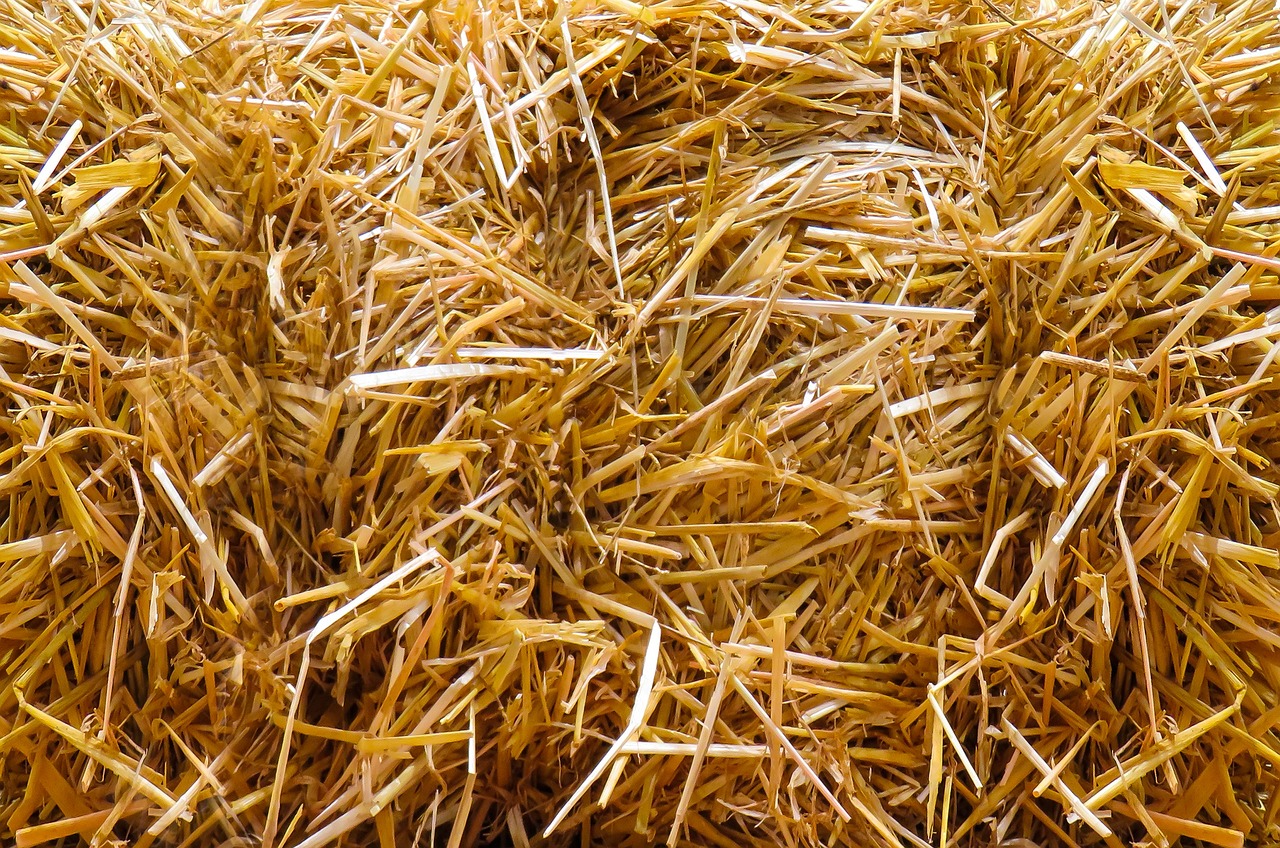
Although we haven’t personally tested this method, straw appears to be a popular bedding choice. If you choose to try it, make sure to still change the bedding regularly and clean out any liquid accumulation from the bottom of the brooder to avoid health risks. For best results, use in combination with an absorbent base layer such as puppy pads, and replace often. Avoid straw if your brooder is damp or in humid climates.
Paper Towels
Paper towels are useful in the first few days of brooding when traction and visibility of waste are key. They're inexpensive and provide a solid grip for tiny feet.
- Easily disposable and affordable.
- Allows clear visibility of droppings, especially needed for the first few days after hatch when needing to determine if ducklings are eating, digesting and passing their food.
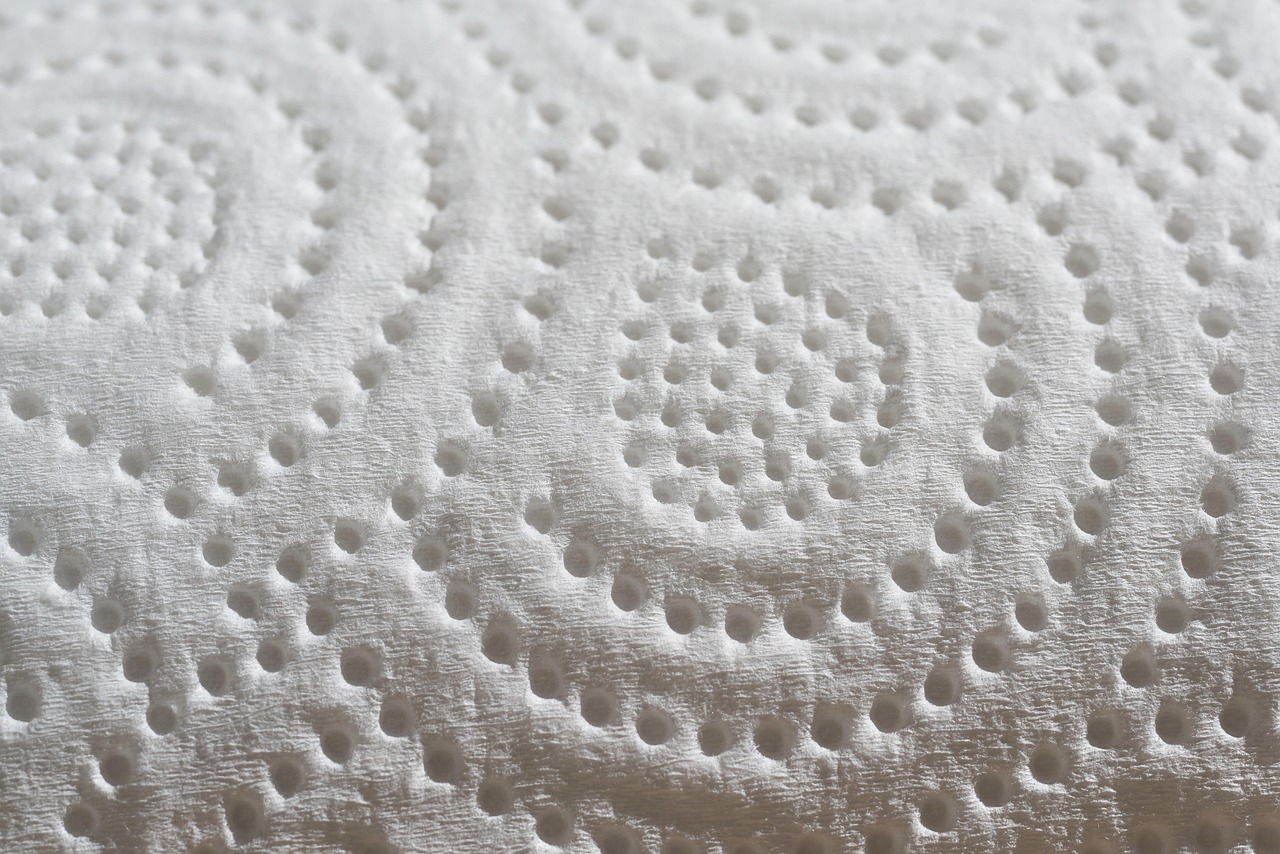
Paper towels quickly become saturated with moisture and droppings, leading to a soggy environment that can promote bacterial growth. If not changed frequently, this can result in foot infections. Additionally, as ducklings grow, they may begin to tear or ingest the towels, creating a choking hazard. For this reason, use only during the first 2–3 days and change them frequently during that time.
Decaffeinated Coffee Grounds
While not common, some keepers experiment with using decaffeinated coffee grounds due to their natural deodorizing properties. They offer a soft texture and absorb odors well but require careful monitoring. We suggest only using this bedding in brooders that don't allow the ducklings to have contact with the bedding, but require maximum absorption, ease of cleaning, and odor control, such as a HatchingTime brooder.
- Eco-friendly option.
- Easy to change/wash out.
Only use decaffeinated grounds, which are usually sold in bulk at farm stores, made especially for poultry bedding. Purchasing used coffee grounds from your local coffee shop, or using grounds from home may be easier, but these grounds may not have been treated properly and could contain harmful chemicals or a high level of caffeine. Mold can form quickly if coffee grounds are left moist for a long period of time, so they must be completely dry before using them. Coffee grounds are best used in a system such as a HatchingTime brooder where the duck droppings fall down onto the bedding, instead of the ducklings standing directly on the bedding.
Dangerous Beddings To Avoid In Your Duckling Brooder
Not all bedding materials are safe for ducklings, and using the wrong ones can lead to serious health problems, injuries, or even death. In this section, we break down the bedding products that you should avoid, whether they’re toxic, prone to mold, or simply ineffective in keeping your brooder clean and dry. Knowing what not to use is just as important as choosing the right bedding.
No Bedding
Skipping bedding altogether might seem like an easy cleanup shortcut, but it's highly unsafe for ducklings. A bare brooder floor becomes slick and cold, leading to potential injuries and developmental issues like spraddle leg. Without bedding, droppings accumulate rapidly, spreading bacteria and making cleanup even more difficult over time. Always use a proper bedding layer to ensure your ducklings’ safety and hygiene.
Hay
Although hay looks similar to straw, it is less effective and more problematic as brooder bedding. Hay absorbs moisture poorly (because it is already holding some moisture) and becomes soggy and moldy very quickly. It’s also more expensive and more prone to harboring bacteria and pests. Using hay can significantly increase the risk of respiratory issues and infections for ducklings.
Cedar Shavings
Cedar shavings are toxic to ducklings and should never be used in brooders. The aromatic oils that give cedar its pleasant scent can irritate a duckling’s respiratory system and cause long-term health problems. Even small amounts mixed with pine or other bedding types should be avoided entirely to prevent exposure.
Cat Litter
Cat litter, whether clay-based or clumping, is completely inappropriate for duckling brooders. It can cause severe health problems if ingested, and the dust can harm their respiratory systems. Clumping litter also expands when wet, which can stick to feet, feathers, or be eaten, posing serious internal risks. Never substitute litter for proper bedding.
Carpet
Carpet might seem like a soft and reusable bedding alternative, but it’s extremely difficult to keep clean. Ducklings create a wet, messy environment that saturates carpet quickly, leading to odor buildup, bacterial growth, and stained material. Additionally, the loops in carpet can trap ducklings' toenails or cause abrasions, resulting in foot injuries. As a side note, you should not keep your brooder on top of carpet. Duck mess will not come out of your carpet!
Why Stuffed Animals Are Unsafe In Duckling Brooders
It’s completely natural to want your ducklings to feel cozy and comforted, especially if they’re brooding alone. A stuffed animal might seem like a loving, nurturing addition, but unfortunately, it introduces serious health risks. When exposed to spilled water or droppings, stuffed toys quickly absorb moisture and turn into breeding grounds for bacteria and mold. What starts as a gesture of comfort can actually lead to respiratory issues or infections.
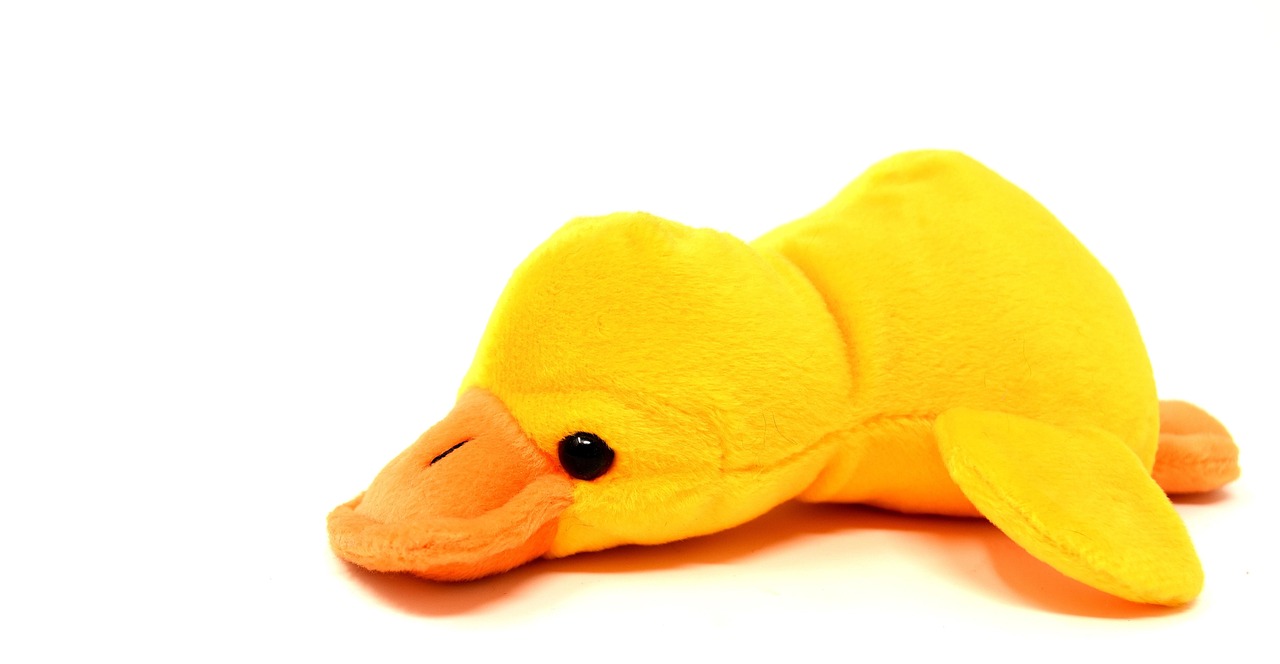
Ducklings are curious nibblers and may chew off bits of fabric or stuffing, which poses a choking hazard or could lead to deadly blockages. Even if the toy looks clean on the outside, it's likely harboring hidden dangers inside. If you’re trying to mimic the warmth and security of a mother duck, consider using a brooder plate instead. It provides safe, regulated heat and allows ducklings to nestle underneath just like they would in nature, without the risk.
Conclusion: Choosing Bedding That Keeps Ducklings Safe and Healthy
Caring for ducklings is a joyful experience, but it comes with a responsibility to create the safest and cleanest environment possible. The bedding you choose plays a critical role in their health, development, and comfort. While some materials may seem soft, familiar, or cost-effective, they can pose serious risks if they trap moisture, harbor bacteria, or aren’t designed for use with live animals.
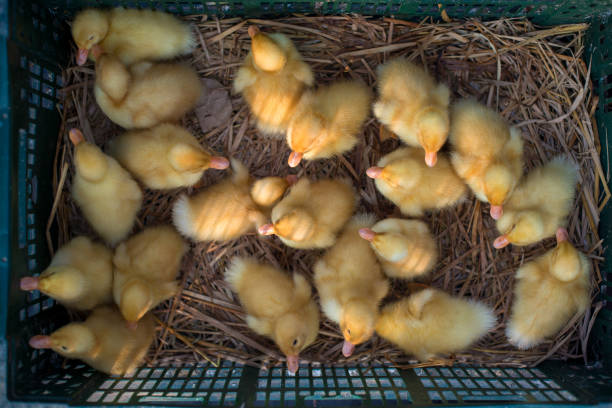
Remember: safety, absorbency, and ease of cleaning are your top priorities. When in doubt, stick with time-tested, bird-safe options like kiln-dried pine shavings or pelletized pine bedding. And always avoid materials known to cause harm, even if they seem harmless, or even helpful, at first glance (such as hay or stuffed animals).
Your ducklings rely on you for every element of their care. By choosing the right bedding, you’re not just cleaning up after them, you’re helping them grow up strong, healthy, and happy.
1. What is the safest bedding for ducklings?
Kiln-dried pine shavings is considered the safest and most effective choice. They’re absorbent, non-toxic, and widely available at farm supply stores.
2. Can I use towels or rags in a duckling brooder?
Yes, for very young ducklings (first 1–2 days), towels or cloths can provide traction. However, they should be changed often and not used long-term, as they hold moisture and can become unsanitary.
3. How often should I change the brooder bedding?
This depends on your bedding choice, but generally, spot-clean daily and fully replace bedding every 1–2 days, or more frequently if it becomes wet or smelly. Ducklings are messy, and cleanliness is key to preventing health issues.
4. Are wood pellets safe for ducklings?
Yes. Pelletized pine bedding (not stove pellets or chemically treated types) is safe and highly absorbent. Just make sure it’s labeled for animal or equine use.
5. Why is cedar bedding dangerous for ducklings?
Cedar contains aromatic oils that are toxic to birds. Exposure can cause respiratory distress and long-term health issues. Even small amounts mixed with other shavings should be avoided.
6. Can I use paper towels the entire time the ducklings are brooding?
No. Paper towels are only suitable for the first few days. They quickly become saturated and slippery, which can cause foot problems and hygiene issues. Older ducklings may be able to completely soil paper towels with just one bowel movement!
7. What’s the worst bedding to use in a duckling brooder?
Many beddings can be toxic, but cat litter may be the most harmful choice for your ducklings.
